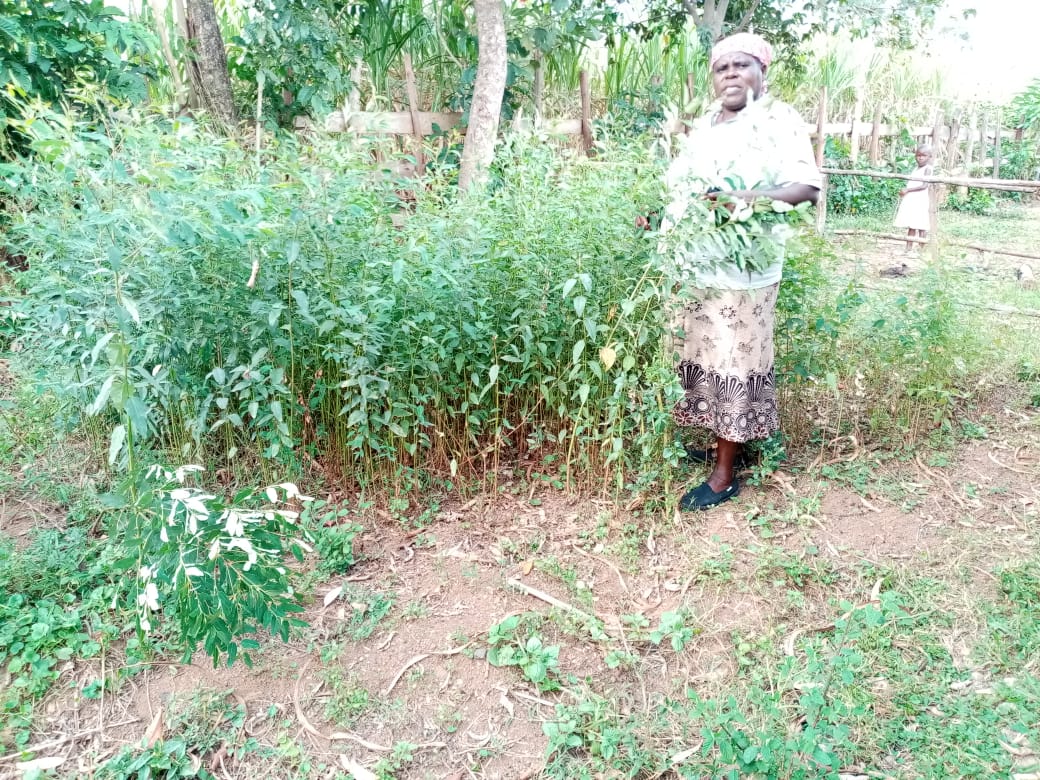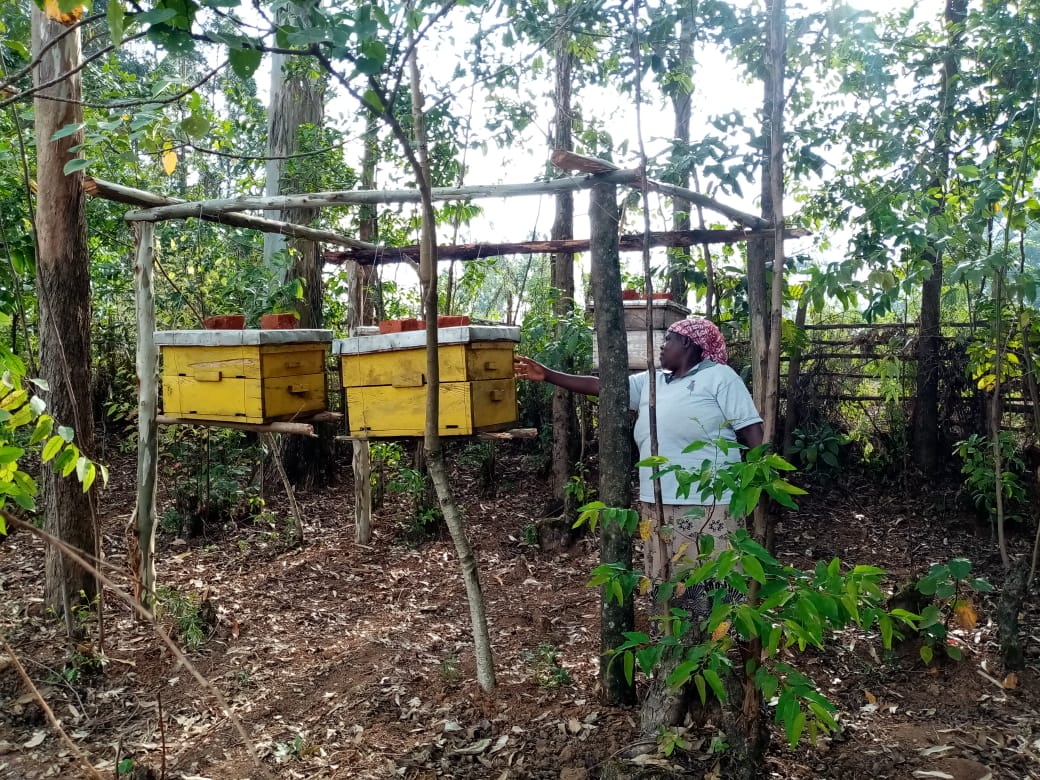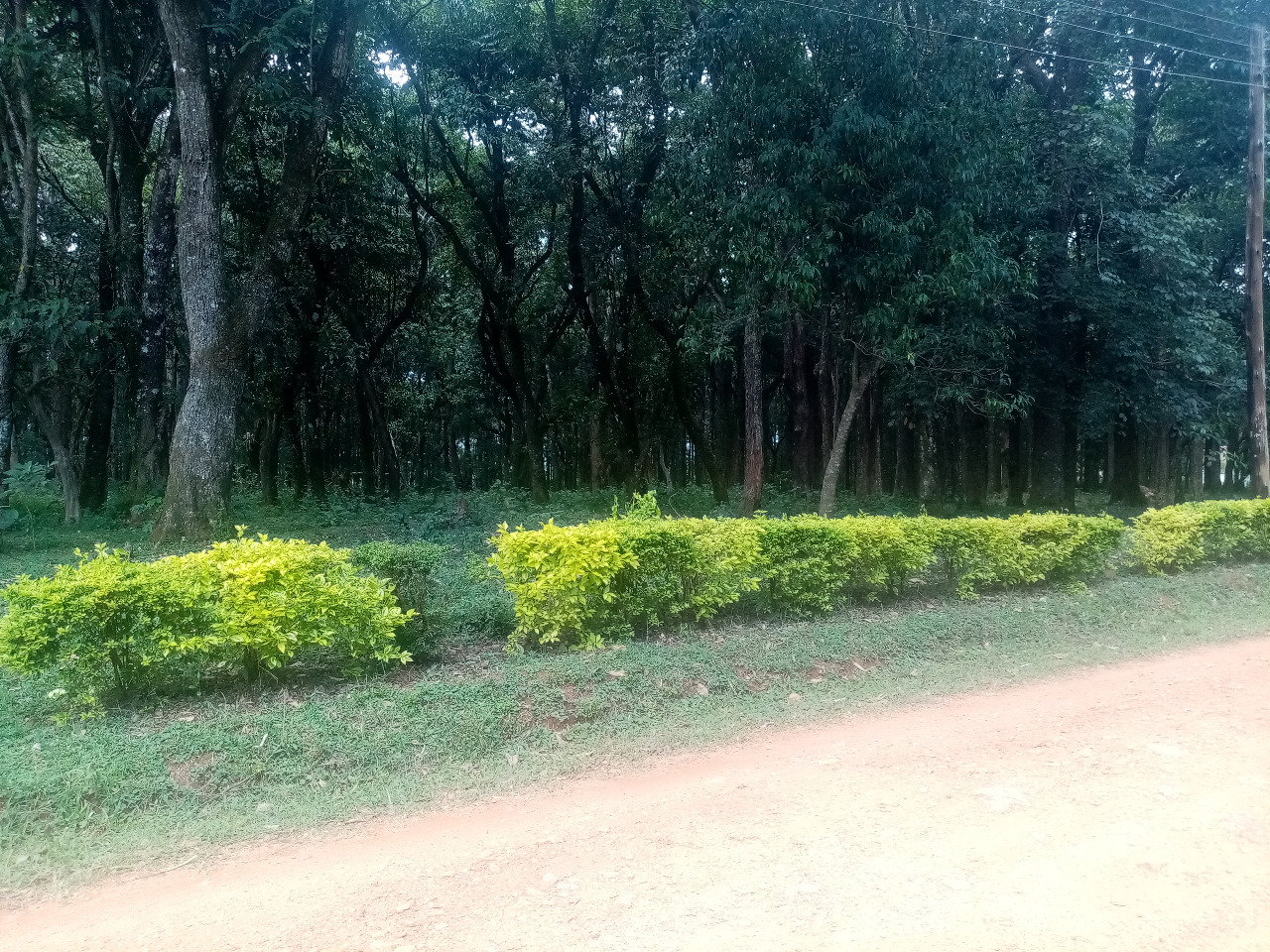Groundbreaking Workshop on AI and Technology-Facilitated Gender-Based Violence at AWiM24
Trending
Tuesday May 13, 2025
Trending

Nairobi
In a homestead in Shamiloli village, Shinyalu Constituency in Kakamega County of Kenya, I am warmly welcomed by a middle-aged woman who is inspecting some beehives. From her smile, it was evident she was anticipating our interaction. She left her working station to welcome me into her homestead.
Mrs Agnes Milimu is one of the people who live near Kakamega Forest. The distance between her home and the forest is about a hundred metres.
No sooner had I introduced myself and announced the purpose of my visit, than she started telling me how the forest is a blessing in disguise. According to her, women are the ones who benefit most from the forest.
“We get rain in abundance because of this forest. Therefore, we easily access plenty of water for domestic use and farming. We also collect firewood, wild food and medicine from it. In addition to this, the forest is a source of income for some people who guide tourists and researchers who visit the forest. The people living here, more so women, will suffer without the forest,” she says.
The forests area is a habitat for numerous flora and fauna species. Some animals and plants face extinction due to human exploitation. An example of a rare tree species today is Erythrina abyssinica commonly known as Kumulembe in the local Luhya dialect. Mrs Milimu narrates how the mythological tree was very common in Kakamega Forest and several homesteads some years back.
“When I got married in this area, there were some trees that were existing in abundance. For instance, the Kumulembe tree was easily accessible. We could use the tree to chase away evil spirits and treat other diseases like ulcers. Today, it saddens me that this valuable tree is only found in a few places,” she says.
Human beings immensely depend on forests as a source of food, energy, water, medicine and income. While they benefit from it, very little is done to ensure this valuable resource is conserved. The current forest cover in Kenya, according to Kenya Forest Service (KFS), is 7.4%. The country is 3.6% short of the 10% constitutionally accepted forest cover. Human activities have played a role in creating this shortage.

Agnes Milimu showing off her beehives. Photo/Sharon Esther Ambani/ African Women in Media (AWiM)Ms Milimu love for the forest made her venture into forest conservation through afforestation. In 2015, Ms Milimu, with the support of her husband and other neighbours, started the Shamiloli Conservation group to educate and empower community members from destroying the forest.
“From the benefits, I get from the forest, I can never allow it to get destroyed. That is the reason we founded this group. Members are taught to plant tree nurseries. Once they mature, we transfer them into the forest. In addition, we advise our neighbours to plant trees in their homes as well.
I also interacted with Mrs Mercy Mbone who is the chairperson of the Shinyalu Development Programme. Her group has been raising awareness about forest conservation during the Covid-19 pandemic.
According to Mrs Mbone, Covid-19 posed a threat to Kakamega Forest. When the pandemic hit, people lost their sources of income. Some of those living near the forest stole timber and firewood from the forest and sold them.
“People were financially affected during the pandemic. Therefore, some people resolved to illegal cutting of trees from the forest and selling them to put food on the table.”
This was not the case before the pandemic. Ms Mbone saw the threat and decided to raise awareness during community meetings known as barazas. She has engaged community members, especially the youth, in other economic activities such as farming. With money in their pocket, they stopped destroying the forest.
“Forest destruction was very rampant. I decided to educate the local community about the importance of conserving the forest. With the knowledge and experience, I get from training and workshops, I advise people to engage in other economic activities such as poultry rearing, beekeeping and fish farming. Such activities make them busy hence preventing them from destroying the forest,” says Ms Mbone.
While at it, she says she has faced numerous challenges to achieve her goals. The biggest problem she had was the scarcity of funds to be used in supporting these projects.
“Donors were very few during the pandemic. The government, on the other hand, had budgeted most of its funds to manage the virus. The projects suffered due to a lack of funds. Luckily, my people were determined to have a breakthrough.”
The effort of women in conserving Kakamega Forest is bearing fruits as there has been a reduction of cases of illegal logging in the forest.
The two women are leading the way to ensure natural resources are protected and conserved for the community’s benefit.
The United Nation’s Sustainable Development Goal (SDG) number 15 calls for the protection, restoration and sustainable use of earthly ecosystems, management of forests, fighting desertification, stopping and rehabilitating land degradation and lastly ending biodiversity loss.
The recently concluded 5th United Nations Environmental Assembly (UNEA) that was held in Nairobi saw the world’s environment ministers united by a Ministerial declaration. They stressed the urgent need to stop the global biodiversity loss caused by climate change and human activities.
Among UNEA’s 14 resolutions that were passed to achieve SDG 15, resolution three focuses on the need for nature-based actions that protect, conserve, restore and manage ecosystems. Inger Andersen, Executive Director of UNEP had pointed out during the meeting that it is critical to have a universally agreed definition of nature-based solutions.
One of such solutions that will ensure sustainable conservation and management of forests is engaging the communities living around forests.
In 2005, the Kenyan Government sanctioned a new Forest Act to counter the human threat to forests in the country. This Act allows the engagement of local communities in the management of these forests through Community Forest Associations (CFA). The government has given the local community moderated user rights when using the forest. They include supervised harvesting of traditional medicine, collecting firewood and wild food, and researching and planting food such as beans in the forest. While benefiting from it, they are needed to collaborate with the Kenya Forest Service for conservation.

According to Mr James Gachia, an Ecosystem Conservator at Isecheno station in Shinyalu sub-county, being a tropical rain forest, Kakamega Forest is self-sustainable despite any change in the environment. Mr Gachia says the biggest threat to Kakamega Forest is the people living around it.
“Kakamega Forest will be under threat if not well guarded. We protect it from people who invade it through the unauthorized cutting of trees and misuse of resources that come with it,” he says.
Although human encroachment is a threat to Kakamega Forest, Mr Gachia says KFS is working hand in hand with the local community to protect and restore the forest.
The CFA in charge of Kakamega Forest in the Shinyalu sub-county is known as the Muileshi Community Forest Association.
Women are important members of Muileshi CFA. The chairperson Joseph Mbai states that despite the whole community being involved in the conservation of Kakamega Forest, the women members are very dedicated to this course.
“The group has empowered women in this journey because they are very hardworking, unlike their male counterparts.”
Although women in this area are active conservers, Mr Mbai says that no conservation group consists of female members only.
“There are no conservation groups entirely meant for women. We come together as a community to conserve Kakamega Forest. What we have are about 6 groups that are led by women. We call such groups women groups.”
Other organisations that have worked with women in Kakamega to conserve the forest include the County Government of Kakamega, Masinde Muliro University of Science and Technology and the National Environment Management Agency.
Ms Rhodah Masaviru, who is in charge of Environment, Water and Natural Resources at Kakamega County said during the recently celebrated World Water Day that they are working towards the conservation of the environment. They do this through sensitization and distribution of tree seedlings to the local communities, more so women. Kakamega currently has a 9.8 % forest cover, a figure higher than the national cover.
Unlike in previous years when women were not allowed to plant trees, today, women have been empowered to lead conservation and the management of natural resources. This is the time to put more effort into conserving our forests as they absorb harmful greenhouse gases that lead to climate change.
This article is part of African Women in Media (AWiM)/UNEP Africa Environment Journalism Programme
We’re not gonna spam. We’ll try at least.

Copyright 2020. African Women In Media
Copyright 2020. African Women In Media
Recent Comments